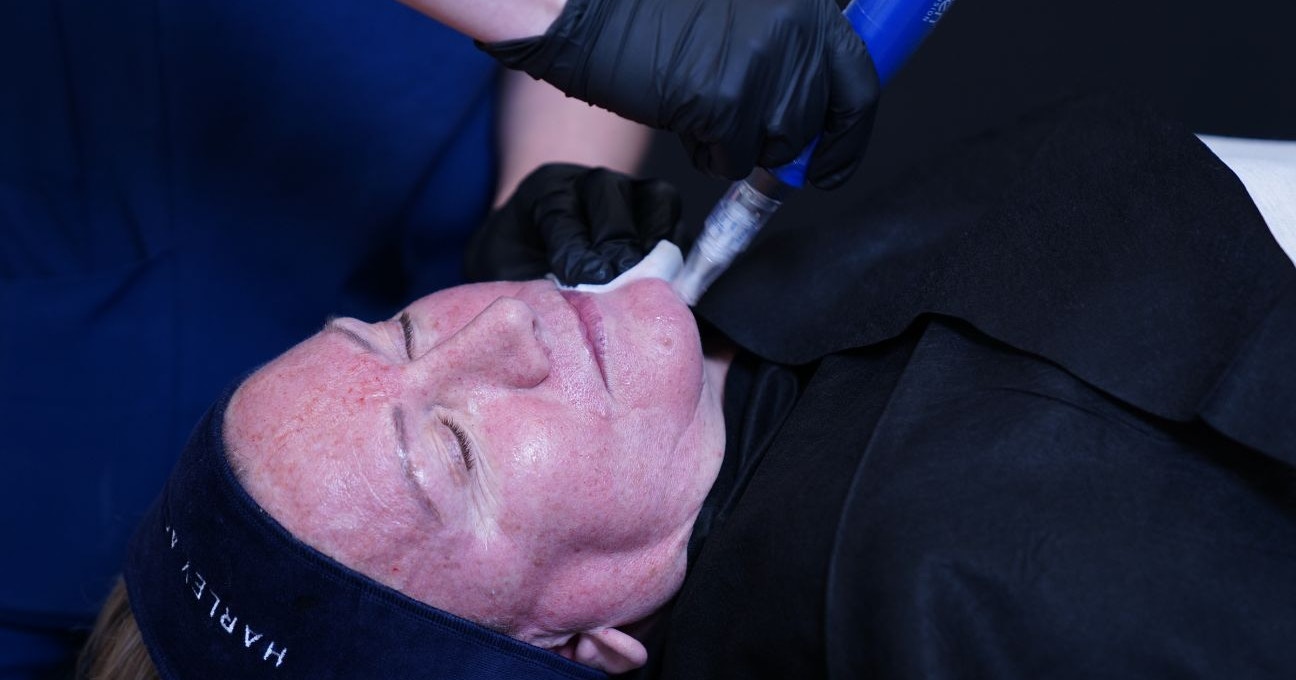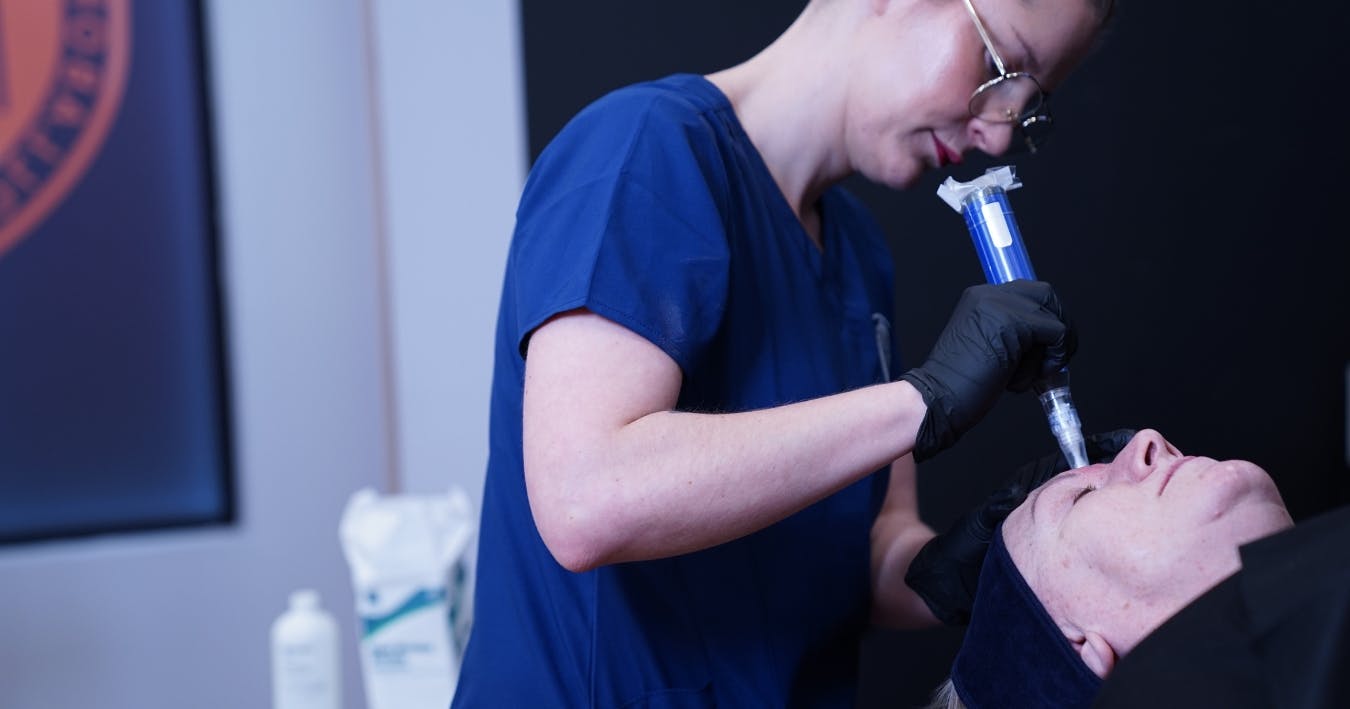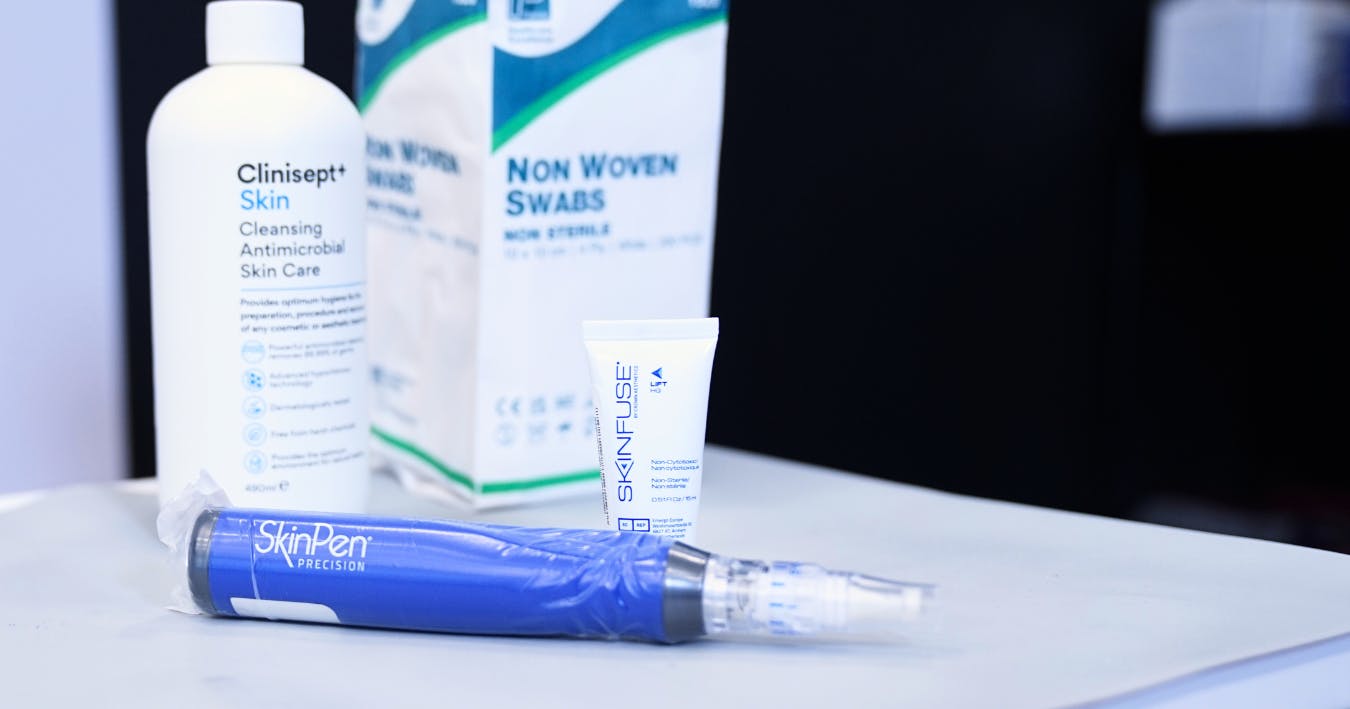Using Microneedling To Treat Melasma

Microneedling is a popular and versatile skin treatment generally used for its collagen-inducing benefits.
Whether used solo or combined with other therapies, it can tackle a wide range of skin complaints from acne to scarring. New research has now also explored using microneedling to treat melasma.
As melasma is notoriously challenging to manage, new therapeutic options would be well received.
In the past, microneedling has predominantly been studied as an adjunct to topical skin treatments for melasma. As the joint Canadian and American team behind this latest research advises, these previous findings have been “promising but variable”.

“Useful adjuvant therapy”
A systematic review and meta-analysis was carried out to pinpoint just how efficacious microneedling was when used with topical melasma medications. Radiofrequency microneedling data was excluded from this study.
The review comprised 12 studies which involved 459 patients across 7 different countries. The following topical melasma treatments were used during these studies:
- Tranexamic acid
- Vitamin C
- Platelet-rich plasma (PRP)
- Non-hydroquinone-based depigmentation serums
- Hydroquinone-based depigmenting agents.
Microneedling was found to be well tolerated and no serious adverse events were reported.
Findings stated that topical therapy with microneedling “improved melasma severity with a large effect (standardized mean difference >0.8) beyond 8 weeks, with best results seen at 12 weeks. Compared to topical therapy alone, topical therapy with microneedling resulted in an additional improvement in melasma severity with a moderate effect at 8 weeks and a large effect at 12-16 weeks.”
Therefore, it was concluded that microneedling is “a useful adjuvant therapy” when treating melasma topically.

Why you should take a microneedling training course
Microneedling training forms part of the Harley Academy Cosmetic Dermatology Course. It’s a popular and versatile skin treatment which has many applications and can be effectively combined with other topical therapies to great effect – as suggested in this review.
Benefits of adding microneedling to your aesthetic practice
Adding microneedling to your aesthetics practice can help you to provide a more rounded, “skin-first” offering, if you are looking to do more than injectables.
It doesn’t require a huge outlay, in terms of devices and the cost can usually be recovered after a few treatments. So, if you want to expand your treatment menu, this is a great way to take a small step into devices.
There's minimal downtime associated with microneedling. Many patients can go back to work straight after, or certainly the next day, making it especially popular.
Additionally, microneedling is suitable for a broad range of patients and can be particularly beneficial for those looking to treat common skin complaints. These include enlarged pores, lax skin and acne scarring – many of which aesthetics practitioners will come across regularly.
Our Cosmetic Dermatology Course doesn’t just cover how to use a microneedling device. It also explains how best to combine treatments to provide optimal skin results to your patients. You'll further enjoy training in assessing skin, polynucleotides, skin injectables, chemical peels, hyperpigmentation and skin of colour.
To find out more about our Cosmetic Dermatology courses, click here to book a call with our Course Advisors. They’ll be able to talk you through exactly what the course covers and how you can get started.
All information correct at the time of publication
Download our full prospectus
Browse all our injectables, dermal fillers and cosmetic dermatology courses in one document
By submitting this form, you agree to receive marketing about our products, events, promotions and exclusive content. Consent is not a condition of purchase, and no purchase is necessary. Message frequency varies. View our Privacy Policy and Terms & Conditions
Attend our FREE open evening
If you're not sure which course is right for you, let us help
Join us online or in-person at our free open evening to learn more
Our Partners














STAY INFORMED
Sign up to receive industry news, careers advice, special offers and information on Harley Academy courses and services

